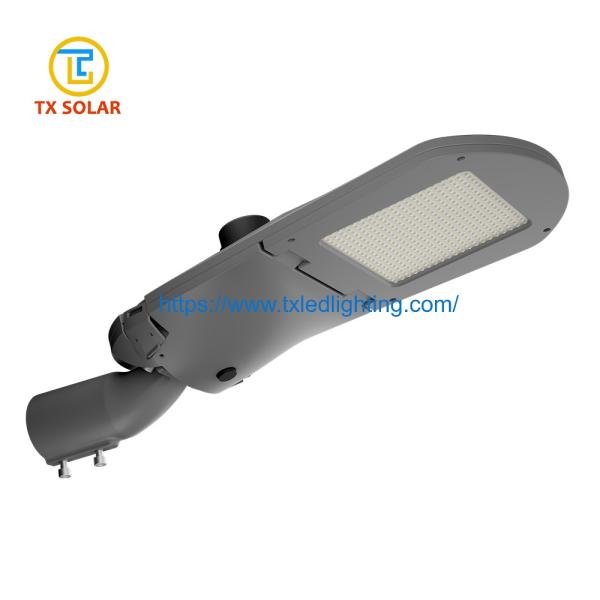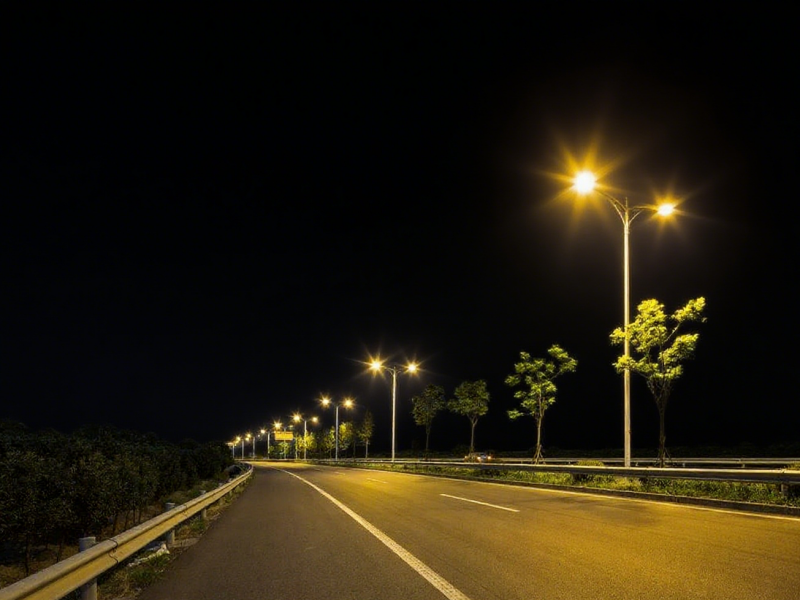LED road lights are now widely used, and more and more roads are promoting the use of street light fixtures to replace traditional incandescent and high-pressure sodium lamps. However, summer temperatures are increasing in intensity every year, and street light fixtures are constantly facing the challenge of heat dissipation. What happens if the street light fixture source does not dissipate heat properly?
 Tianxiang lamp fixture features a direct-contact thermal conductivity structure that transfers heat generated by the LED light source directly to the heat sink, reducing internal heat accumulation. Even in extremely hot summer weather, the street light maintains its rated brightness, avoiding problems such as sudden brightness drops and flickering caused by high temperatures. This truly achieves “high stability year-round” and provides reliable protection for urban street lighting.
Tianxiang lamp fixture features a direct-contact thermal conductivity structure that transfers heat generated by the LED light source directly to the heat sink, reducing internal heat accumulation. Even in extremely hot summer weather, the street light maintains its rated brightness, avoiding problems such as sudden brightness drops and flickering caused by high temperatures. This truly achieves “high stability year-round” and provides reliable protection for urban street lighting.
1. Shortened Lifespan
For street light fixtures, heat dissipation is of paramount importance. Poor heat dissipation can have a series of negative impacts on the lamp’s operation. For example, LED light sources convert electrical energy into light, but not all electrical energy is converted into light due to the law of conservation. Excess electrical energy can be converted into heat. If the LED lamp’s heat dissipation structure is not properly designed, it will not be able to quickly dissipate excess heat, causing excessive heat buildup in the street light fixture and shortening its lifespan.
2. Material Quality Deterioration
If an street light fixture source overheats and cannot dissipate this heat, the materials will repeatedly oxidize due to high temperatures, leading to a degradation of the LED light source’s quality.
3. Electronic Component Failure
As the temperature of an street light fixture source gradually rises, the resistance it encounters increases, leading to more current and, consequently, more heat. Overheating can damage electronic components, leading to failure.
4. Deformation of Lamp Materials
In reality, we often encounter this in our daily lives. For example, when an object is exposed to excessive heat, it will deform slightly. The same is true for street light fixture sources.
LED light sources are composed of many materials. When the temperature rises, different parts expand and contract differently. This can cause two components to be too close together, causing them to squeeze against each other, resulting in deformation and damage. If companies want to produce high-quality street light fixtures, they must first prioritize the lamp’s heat dissipation design. Solving this heat dissipation problem ensures the long lifespan of street light fixtures. Therefore, heat dissipation is a key issue that high-quality street light fixtures must overcome.
Currently, there are two primary methods for heat dissipation in street light fixtures: passive heat dissipation and active heat dissipation.
1. Passive heat dissipation: Heat generated by the street light fixture is dissipated through natural convection between the surface of the street light fixture and the air. This heat dissipation method is simple to design and easily integrates with the mechanical design of the street light fixture, easily meeting the required protection level for the lamp, and is relatively low-cost. It is currently the most widely used heat dissipation method.
Heat is first transferred through the solder layer to the street light fixture’s aluminum substrate. Then, the aluminum substrate’s thermal conductive adhesive transfers it to the lamp housing. Next, the lamp housing conducts heat to the various heat sinks. Finally, convection between the heat sinks and the air dissipates the heat generated by the street light fixture. This method is simple in structure, but its heat dissipation efficiency is relatively low.
2. Active heat dissipation primarily uses water cooling and fans to increase air flow over the radiator’s surface to remove heat from the heat sink, improving heat dissipation efficiency. This method has a relatively high heat dissipation efficiency, but it requires additional power consumption. This heat dissipation method reduces the system efficiency of street light fixtures and is very difficult to design.
Post time: Sep-02-2025





